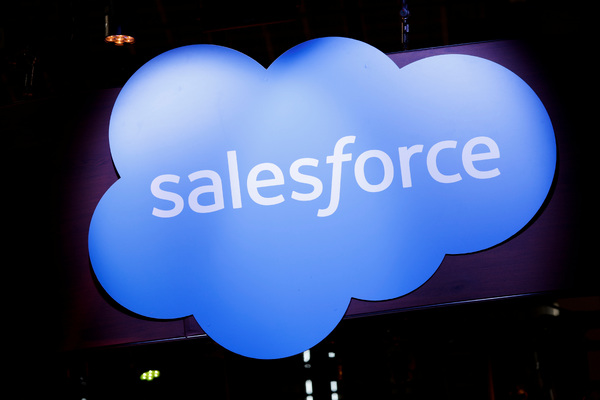Building business growth with WiFi 7

Gary Newson at NETGEAR describes the WiFi revolution that is set to enable the future of work
The way we work has been fundamentally reshaped over the last few years, with remote teams, virtual collaboration, cloud applications and bandwidth-hungry technologies like video conferencing and AR/VR becoming the norm. This sea change in how businesses operate has put unprecedented strain on WiFi networks. The old WiFi standards simply can’t keep up with the insatiable demand for higher speeds, lower latency, better reliability and seamless connectivity.
This means that business leaders have decisions to make about how they ensure employees are equipped to accommodate the connectivity requirements not just of today, but in the future. A recent study carried out by YESSS Electrical found that 28% of respondents couldn’t work at all without an internet connection, and 20% had experienced issues connecting to video calls.
Many businesses rely on wireless routers to expand WiFi coverage across the office, to gain strong encryption, greater user capacity and to secure a robust broadband connection. However, they are still dependent on the same WiFi 6 and 6E standards that have been in place since 2020.
Those standards are now insufficient to meet the business needs of today. Which is why the new standard - WiFi 7 – which has been introduced this year, promises to revolutionise workplace connectivity whether employees are in the office or working remotely.
With theoretical maximum speeds of up to 40Gbps (4x faster than WiFi 6E), support for 320MHz channels (doubling bandwidth), and advanced technologies like multi-link operation, WiFi 7 delivers the horsepower needed for today’s hyper-connected workforce. So what exactly does this mean for businesses?
The arrival of a new WiFi standard will focus business minds on just how much we rely on the humble router, and how much more we could do with a boosted WiFi connection.
Low latency, high performance collaboration. the new model will drastically reduce latency and jitter. This is critical for supporting real-time collaboration apps like video conferencing, virtual whiteboards, and interactive AR/VR spaces that require ultra-responsive data transmission. Staff will no longer have to suffer through unreliable video streams, choppy audio and frozen screens that disrupt meetings and creativity sessions.
Seamless roaming for the mobile workforce. Employees have the freedom to work anywhere and can take advantage of WiFi 7’s multi-link operation to simultaneously connect to multiple WiFi bands/channels, enabling seamless session handoff as they roam. This prevents dropped connections and degraded performance as they move around the office or residential spaces.
Next-gen application performance. The massive bandwidth increase enables a new class of data-intensive work apps and use cases that were impractical before. Opportunities like cloud desktop streaming, immersive extended reality (XR) environments for training/design visualisation, and AI-powered video analytics become feasible and performant over boosted networks. This allows businesses to push innovative technologies and capabilities to more employees.
Smarter WiFi network management. As well as the raw performance uplift, WiFi 7 brings smarter network management and quality of service (QoS) capabilities. Multi-link operation means mission-critical traffic can be prioritised over the clearest channel while less important traffic is demoted to another band. Networks can automatically detect and mitigate congestion, balancing demand across channels/bands. This allows consistently optimised connectivity for remote meetings, file transfers and other key work apps.
When it comes to technology priorities, WiFi is not always top of the list, but ignoring WiFi 7 will risk getting behind on the kind or robust, responsive and secure network that is needed for the future. Taking full advantage, means that businesses must plan the next stage in their WiFi infrastructure deployments carefully.
Boosting the internet connection
Advanced routers are not just for offices. Plugging a standard router into an ISP connection will instantly deliver speed and high performance for employees working at home, for example. In the workplace, different router types offer varying coverage, bandwidth and management capabilities depending on the scenario. A single router is ideal for small offices, retail spaces or residential-based workers, while a standalone high-end router will boost speeds on WiFi 7 enabled devices.
Another alternative is a mesh system. This optimises seamless, gigabit+ speeds across mid-size and large offices, campuses and multi-floor spaces and uses multiple nodes to eliminate dead zones. A mesh system used at home will have the same effect, allowing video conferencing calls, streaming, eCommerce and any other use to continue unimpeded simultaneously.
Security considerations
Moving to WiFi 7 is an ideal opportunity for businesses to review their wireless network security posture. The new model enforces WPA3 security in the 6Ghz band, delivering more robust encryption and authentication compared to older standards.
However, comprehensive end-to-end protection requires a multi-layered approach. Businesses should look for solutions with integrated cyber-security that automatically detects and prevents threats across all connected devices and applications wherever the user is located.
Looking ahead, WiFi 7 will usher in a new era of high-bandwidth, low latency workplace connectivity to accelerate productivity, collaboration and innovation. By investing in the right WiFi infrastructure, businesses can unleash the full potential of today’s work applications while positioning themselves for whatever comes next.
Gary Newson is EMEA Sales Director at NETGEAR
Main image courtesy of iStockPhoto.com and skynesher

Business Reporter Team
Related Articles
Most Viewed
Winston House, 3rd Floor, Units 306-309, 2-4 Dollis Park, London, N3 1HF
23-29 Hendon Lane, London, N3 1RT
020 8349 4363
© 2024, Lyonsdown Limited. Business Reporter® is a registered trademark of Lyonsdown Ltd. VAT registration number: 830519543





